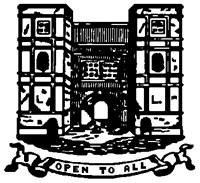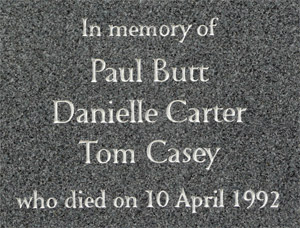History of Aldgate and the Ward Club
Aldgate can trace its history back to Roman times when it was the area inside the eastern gate of the walled city of Londinium. The gate itself was only taken down in 1760.

The name Aldgate probably comes from the Anglo Saxon "Ael-gate" where "ael" means foreigner or stranger. The structure of the gate was recorded and it forms the emblem of the Ward Club.
The infamous Thomas Fauconberg and his Lancastrians made an assault on London at Aldgate in 1471 with the intention of overthrowing Edward IV. The attack was repelled by Alderman John Basset and a band of citizens by counter attacking and lowering the portcullis.
Aldgate has had more than its share of famous residents. According to a lease of 1374, Geoffrey Chaucer, as Controller of Customs, lived in a dwelling that was above “Ael-gate” itself. Daniel Defoe was another famous resident in the 18th century.

Our Ward Church is the Guild Church of St Katharine Cree, situated in Leadenhall Street. The Parish was formed in 1473 and the Church is named after the same St Katharine whose name is also given to the "Catherine Wheel" which is such a popular firework on bonfire night.
There are a number of old festivals and traditions associated with the Ward. St Katharine Cree is the focus of the mediaeval ceremony of "Beating of the Bounds" which has been revived in recent years. One of the Club’s annual October events is the preaching of the "Lion Sermon" which commemorates the "escape" of Sir John Gayre, Lord Mayor and Fishmonger, from an encounter with a lion in 1646 whilst travelling.

Today the Ward is home to one of the most important financial centres in the world and to London’s long-established maritime industry, including the historic Baltic Exchange and Lloyd’s Register. The Baltic Exchange’s old building in St Mary Axe was destroyed by an IRA bomb on 10 April 1992 and has been replaced by the Swiss Re "gherkin", now one of London's most striking and well-known landmarks. The Baltic is now next door to its former site at number 38 St Mary Axe.
The Ward Club traces its history back over three centuries. It started as the Aldgate Ward Ratepayers Association and was established to represent residents and businesses with Parliament and the Metropolitan Board of Works.
Each Ward of the City of London elects members to the Court of Common Council and the Court of Aldermen which are part of the decision-making process in the City of London - more information is available on the Corporation's web site.
The history of the Ward Club by Dr Nick Barratt was published in 2005: One Hundred Years in the History of The Aldgate Ward Club.
